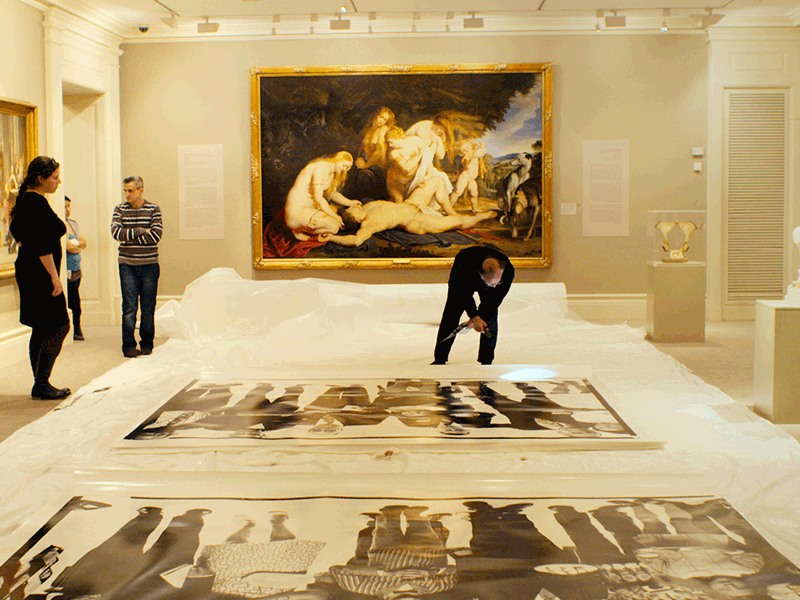The Israel Museum sits atop a hill in Jerusalem that overlooks the Knesset, yet it has an aura of political and social power all its own.
The institution houses many coveted artifacts, including the Dead Sea Scrolls, and an impressive collection of modern paintings and sculptures. But its influence lies in the various subtle ways that the museum curators and staff help to present Israel’s story – a narrative that, depending on whose eyes observe, can be vastly different.
This is the main thesis of Ran Tal’s new documentary, The Museum. The film will have its Canadian premiére at the Toronto Jewish Film Festival on May 8 and 10, with Tal in attendance for both screenings.
It is Tal’s third non-fiction film to train its eye on an Israeli centre, after 67 Ben Zvi Road and The Garden of Eden. Here, he continues his journey to reveal the country and its people through cultural spaces. It is the winner of this year’s David A. Stein Memorial Award.
READ: DOCUMENTARY ABOUT FEMALE HASIDIC TRAILBLAZERS
The most poignant moments in the film are brief, two-minute profiles of various employees and guests of the Israel Museum, unveiled through voice-over monologue.
Among these unnamed figures are an immigrant who refurbishes the paintings, a daughter of Holocaust survivors sketching in the gallery space and even the resident rabbi and kashrut inspector. The latter explains, of the museum’s stories intersecting with his religious belief, that the two “are parallel lines that will never meet.”
In these monologues, which are rich testaments of feeling, the audience should get a deeper understanding of what it is like to live in Israel.
The Museum also focuses on some of the controversies attached to an establishment meant to define a country whose politics are always a topic of contention. Some visitors are disappointed with the space’s inability to project what they deem to be the proper Israeli history or experience.
A few of these discussions surround an exhibit on Hadrian, the Roman emperor responsible for the slaughter of hundreds of thousands of Jews. Another debate centres on the absence of Palestinian and Druze clothing and embroidery in the museum. Many of these artifacts are hidden in the storerooms and have not been exposed to the public.
The doc also concentrates on the museum practitioners, as they move heavy artifacts around, make subtle applications for gallery items or simply keep the building looking pristine.
Appropriately, like the interior designs of the building, The Museum’s esthetic is clean and precise. In some moments, the image achieves such an intimacy with the paintings on display, it is as if the artwork is gazing back at the audience.
Tal and his cinematographer, Daniel Kedem, take a fly-on-the-wall approach that recalls the work of esteemed documentarian Frederick Wiseman. The Museum, however, runs only 72 minutes – about two hours fewer than a typical Wiseman treatment.
Despite the movie’s form, the filmmaker is not always subtle when telling (instead of showing) the ways that curators and organizers present a subjective view of history.
In one scene, Prime Minister Benjamin Netanyahu extols the space’s virtues as one with a Zionist agenda, reinforcing the Israeli people’s bond to their land. Other scenes, involving uniformed Israeli soldiers on a tour, make a similar nationalist point.
While the building and its projects bring together more than a million visitors every year, the Israel Museum, as depicted in Tal’s documentary, also shows the divisions within Israeli society. The extent to which the film wrestles with issues of national identity ensures that The Museum, for all its beauty and splendour, rarely feels like a promotional film.
